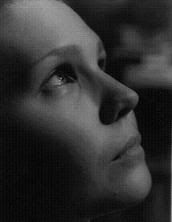The following are my personal notes from the book "Plot" (Dibell), which is part of the Elements of Fiction Writing series.
+Plot is a verb.
+Beginnings should avoid clutter in all ways possible.
+Readers are only interested in explanation after their curiosity has been aroused by something in need of explaining.
+Only important things, things important to understand this story right now, should be explained.
+Make each piece of exposition justify its inclusion.
+Try to make each scene serve multiple purposes.
+Revelation is seen by the reader as motion, even if nothing has changed but knowledge or insight.
+Plot is the thing that characters do, think, say, feel that makes a difference to what comes afterward.
+A scene can convey moods, attitudes, a sense of place and time, anticipation of what's to come, reflection of what's past; but a scene must advance the plot and demonstrate the characters.
+Struggle, conflict, dissatisfaction, aspiration, choice: these are the basis of effective plots.
+Effective beginnings must encompass at least these three things: 1) Get the story going/show what kind of a story it's going to be. 2) Introduce and characterize the protagonist. 3) Engage the readers interest.
+Start in the middle of things - the first big crisis.
+Any story worth telling is worth revising.
+With a divided narrative you must compensate with increased strong connective character devices to make sure one character doesn't end up hogging the story and the reader's interest.
+Make sure each scene isn't static. End them subtly or obviously, with cliffhangers.
+Don't break viewpoint in the middle of a scene.
+Think of character sketches as the part of an iceberg underneath the water and your story as the top. Character sketches anchor your story, but don't have to be seen.
+Plot is the engine drawing everything along. If it's weighed down with too much exposition, it's going to come to a halt.
+Weave plots and subplots together like a braid but remember that your story is only as strong as your weakest strand.
+The job of a story's middle is to build toward and deliver crisis.
+Scenes are the foundation of fiction.
+A set-piece is a big scene the reader can see coming and can look forward to awhile, either in fear or hope, before it is reached. (Ex: The big duel at the end, finding out the identity of the murderer.)
+Stories need to be divided into stages - immediate short-term plots, each with it's own build-up, crisis and resolution.
The book also goes on to address things like patterning for contrast and mirroring characters and plots. While good material, I found it difficult to transfer into note form. It also details linear and circular endings, which have already been outlined in my previous post on the book "Conflict, Action and Suspense."
Subscribe to:
Post Comments (Atom)

No comments:
Post a Comment